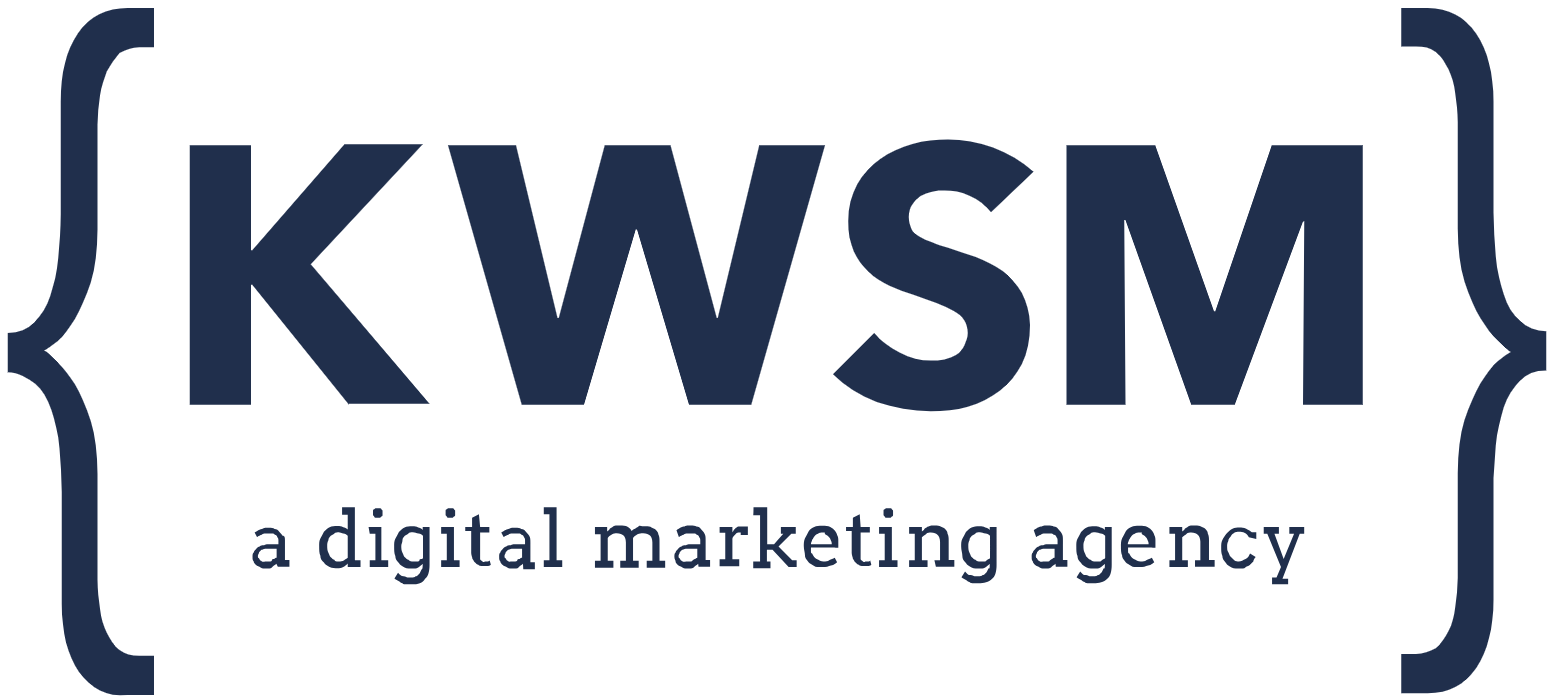
When writing marketing copy and content, anybody can put words on a page. But that page is as good as blank if it fails to tell a substantial story. KWSM has been crafting professional stories for businesses across many industries for 13+ years to engage better and connect with readers, establish themselves as authorities, and drive traffic and conversions. Our brand journalism approach to content marketing emphasizes telling the stories of the people behind a brand or company.
What is a Brand Journalism Approach to Content Marketing?
I have worked in the digital marketing industry for five years and spent years freelancing as a copywriter before finding my home at an agency where I could do meaningful work in content marketing. At KWSM, we prioritize brand journalism, and I’m getting to tell some amazing stories about our clients and the customers they serve. Along this journey, I’ve learned something important: There are two kinds of marketing writers in the world: copywriters and copywriters.
Some content mills (who shall remain nameless) reduce copywriting to an assembly line, ripping the heart and soul out of the words. These are copywriters; all that matters is putting words on a page. Brand journalism, however, requires copywriters. These people identify and tell a compelling story about a company to better engage with readers, establish authority and trust, and create a long-lasting relationship between businesses and customers.
“Brand journalism highlights the heart and soul of a company, as well as the experience and expertise, by telling stories unique to that brand. This type of content engages the audience and creates an emotional connection, which drives consumers to seek more information and build a relationship with the brand.”
– Katie Wagner, President, KWSM: a digital marketing agency
This journalistic approach to digital marketing pays off in driving leads, showcasing employer branding, and improving search engine optimization as Google combats the imminent AI incursion. Brand journalism creates demand, loyalty, interest, and, ultimately, conversions by positioning businesses as thought leaders and connecting with their audiences.
Brand journalism is a form of content marketing with the traits of traditional news media, like investigative research, real-life interviews, and commentary from experts in the field. We are more concerned with aligning the content with the target audience’s experiences and being informative, honest, and focused on establishing a brand identity instead of generating sales.
Key Elements of Brand Journalism
Unlike conventional content marketing, which focuses on products and services, you aren’t just writing sales copy; you’re telling an engaging brand story. Key elements of brand journalism include:
- Integrating journalistic skills into your content creation
- Using an objective POV to give stories a journalistic polish
- Telling stories about the humans behind your brand and the humans your brand helps
- Using your social media accounts, website, YouTube channel, and other platforms to gain traction and spread the word
- Building brand awareness and affinity
- Finding and telling stories that convey the brand identity and personality
How is an Example of Brand Journalism for Content Marketing?
The brand journalism approach to content marketing humanizes businesses through storytelling. Here are three different ways you can leverage this tactic:
Driving Leads with Brand Journalism
When implemented by an experienced digital marketing agency, a brand journalism approach to content marketing sustainably generates high-quality leads by addressing your audience’s pain points, wants, and needs. You’re giving them direction, building your brand awareness, and growing an affinity between the brand and its customers.
Lead Generation Case Study
One client I write for is a trust litigation law firm. They partnered with KWSM to drive more leads. I worked to establish a brand voice and identity and position them as industry authorities by conveying their story.
To create powerful content, I have interviewed the attorneys at the firm about the kinds of cases they frequently work on and the circumstances surrounding them, their expert insights on relevant news stories, trends in trust litigation, and what distinguishes them from other firms in the space. I write articles from their POV that align with their core values, brand story, and personal experiences.
In one instance, we posted a third-party article on their LinkedIn company page and insights from one of the partners who disagreed with the article’s findings. The article essentially said that employees were losing more cases because of remote court proceedings during COVID. Still, she argued that they were winning more cases based on her experience in trial.
Because we leveraged her expertise and seasoned insights, the post reached thousands of attorneys who agreed or disagreed with her point. Still, the effect was the same: it drove engagement, traffic, and impressions.
The content we create for this law firm consistently generates inquiries and leads. Over the last year, the firm has experienced:
- Nearly 700,000 impressions on their content
- Over 52,000 page views on their website
- About 12,500 clicks on content
- Over 370 first-page keyword results
The results continue to grow with each piece of content that we publish.
Related Article: How a Brand Journalism Case Study Approach Drives Leads
Brand Journalism for Employer Branding
Marketing is only sometimes customer-centric. I’ve used brand journalism content marketing strategies to help several clients overhaul their employer identities. Take, for example, one of my clients in the marine services industry.
Employer Branding Case Study
This client came to KWSM to help improve retention and attract new employees. We devised campaigns targeting current and prospective employees, showcasing their award-winning culture.
How did we tell the unique story of the employee experience? Like any journalist worth their salt, I talked to the employees directly and extensively, which required thoroughly preparing questions, and interviewing people with first-hand experience.
We had our video department film interviews and used both video and text to tell their story in a way that would resonate with current and prospective employees alike.
In one piece, I wrote a memorial for an industry legend who was an Executive Vice President at the company at the time of his passing. I interviewed someone close to him to understand more about who I was writing about. The client thanked me for putting my heart into the piece and said the memorial blog I wrote brought them to tears. I didn’t just announce his passing; I put his legacy into words.
“Using brand journalism in Employer Branding helps companies share their team’s story and how their people grow culturally within the business. This is growing more valuable for businesses looking to retain their top talent and attract those star candidates who may feel unfulfilled working at a competitor. This is brand journalism at its core, sharing the stories through experiences and emotions of those who serve your clients or customers well.”
– Jeff Soto, Vice-President of Strategy and Client Relations, KWSM: a digital marketing agency
This is the power of brand journalism. I showed current and prospective employees how the company appreciates and celebrates its people. I used this story to demonstrate that they create a deeper connection with their employees, positioning it as an ideal workplace.
This blog’s performance reflects the impact it had. This post has been one of our top-performing blogs because we appealed to the employees who knew him and told his story. It has had 899 page views over two months; 300 (34%) of these people have revisited it, and when we posted it on social media, it was one of the most engaged posts.
The writing I have done for this client has realized continuous improvement in SEO rankings, employee engagement, and job applications:
- Improvement in SEO rankings: When we started blogging for this client in October, their site received 372 clicks and 5,953 impressions. One month later, we saw an immediate increase to 453 clicks and 6,022 impressions. Six months later, we saw a 65% increase in clicks to 612 and a 99% increase in impressions to 11,820.
- Improvement in employee engagement: We send our blog posts in an email newsletter that only goes to employees. Since we started this campaign, the open rate has been 62.54%, and the click average has been 15.3%. What is the industry average for both of these metrics? 16.93% and 1.68%, respectively.
- Improvement in conversions/job applications: Before we started blogging in July of 2022, the average number of applications our client received was 86 per month. In March of 2023, the average monthly number of applications skyrocketed 56% to 134, and our client has also reported an improvement in the quality of applicants.
Search Engine Optimization with Brand Journalism
Brand journalism also offers SEO benefits. As Google continues to evolve and adapt to the introduction of AI, businesses must evolve and adapt, too, or they risk falling in rankings and conversions.
E-E-A-T is a criterion Google emphasizes that helps determine whether a piece of content is valuable. If Google recognizes the content as helpful, you naturally rank higher. This is done by establishing first-hand experience and genuine authority on a topic. E-E-A-T stands for:
- Experience
- Expertise
- Authoritativeness
- Trustworthiness (arguably the most important)
You have probably heard of ChatGPT and other AI tools that rapidly create content. Google has updated its search quality guidelines to combat this. E-E-A-T hones in on the limitations of AI because it can never truly replicate the human element of writing.
Ultimately, a brand journalism approach to content marketing is more important than ever because, when implemented correctly, it satisfies all the E-E-A-T criteria, boosts rankings on Google search engine results pages (SERP), amplifies traffic, and drives leads and conversions.
Related Article: What Does Google’s E-E-A-T Mean for Content Marketing?
Why Brand Journalism is Important
Brand journalism is important to a strong digital strategy in 2023 and beyond. By establishing authority and trust, businesses see more conversions. Many customers have the same gripe about businesses: they seem inauthentic.
I regularly help clients establish an authentic and cohesive identity and a reliable journalistic voice – from their website to their social media to their email campaigns – to generate leads. No matter the company’s size, this is the foundation for marketing success.
I’ve worked with marketing agencies and companies in different corners of the world. One thing is clear: Trust is the ace up the sleeve for small businesses. It’s what makes customers choose them over larger, possibly more convenient competitors.
Brand Journalism Case Study
For one of my clients, an accountant, I have weekly calls to discuss the ins and outs of her work to get expert insights, and we’ve worked closely to refine the voice and tone to be more engaging and reflective of her identity and values.
I ask questions about what separates her services and gather real-life examples of the benefits she offers. I craft a compelling narrative that tells her story using these personal accounts and insights. The results? She receives several leads per week and consistently says she’s too busy to take them all on, which is an excellent problem to have. Plus, we edit the copy live, so I can hear the genuine human reactions, like laughter when she reads it – which is what good writing should evoke.
Related Article: Brand Journalism Case Study
Partner with KWSM and Tell Your Story
As a copywriter, I can tell you that not all copy is created equal. But there’s still a silver lining: We control the quality of the copy we create. Ensuring your copy is engaging, informative, authoritative, and effective is the basis of a brand journalism approach to content creation. Your organization’s story is, in many ways, its greatest asset, and KWSM’s brand journalists ensure it’s told well.










